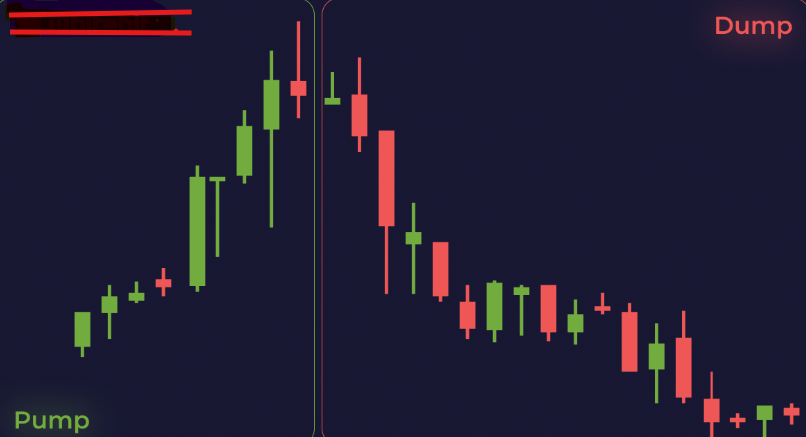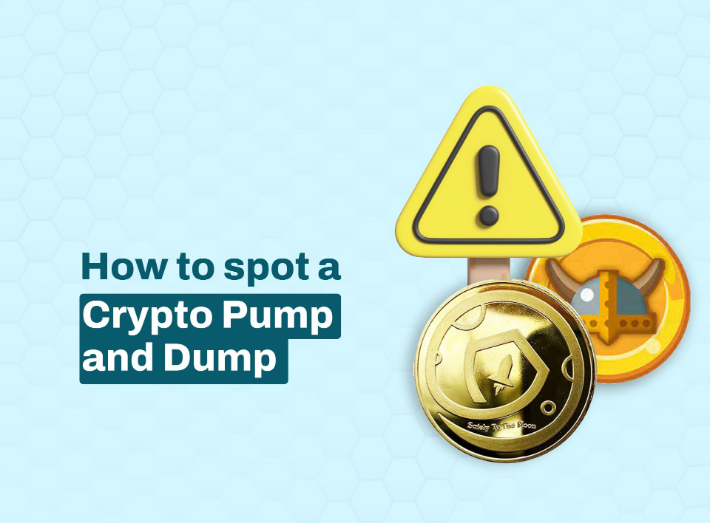💣 If you’ve ever opened a crypto chart and watched the price drop 30% in just a few minutes — congratulations, you’ve witnessed a dump live.
But what is it really, and why does it keep causing chaos even on the most “civilized” exchanges?
1. What is a dump
A dump is a sharp and large-scale drop in an asset’s price caused by mass selling.
In simple terms, someone — or a whole group — starts unloading huge amounts of coins, and the price collapses.

Usually, a dump is part of the classic “pump & dump” scheme — “inflate and dump”:
- first, the asset is “pumped”, creating hype and an illusion of growth,
- then it’s dumped at a high price, leaving late buyers with useless tokens.
2. How it looks in reality
The pattern is almost always the same:
- Anonymous insiders or big players start buying a low-liquidity token.
- Chats, posts, and “analysts” appear — “X100 soon! Project connected to Binance! Don’t miss it!”
- The price rises — the crowd sees green candles and starts buying.
- Once the target price is reached, the main holders (whales) start selling in bulk.
- The market crashes, liquidity vanishes, and the crowd is left “at the bottom of the chart” with tokens now worth less than a cup of coffee.
3. Who causes dumps
- Whales — big players controlling millions of tokens, profiting from price swings.
- Project insiders — sometimes even developers “dump” their own tokens after listing.
- Telegram manipulators — the “Pump Groups” promising “secret X10 signals”.

4. Are there “natural” dumps?
Yes, quite often. Not every crash is a conspiracy.
Sometimes dumps happen because:
- investors take profits after a long rally,
- bad news (exchange hacks, CEO arrests, stricter regulations),
- sudden liquidity exits (like Bitcoin dropping sharply).
In these cases, the crash is just a part of the market cycle, not a planned attack.
5. Why dumps are especially dangerous in crypto
The crypto market is young, volatile, and barely regulated.
That’s why “pump and dump” schemes are easy to pull off:
- the coin costs pennies,
- liquidity is tiny,
- the team is anonymous,
- most tokens are in a few wallets.
That’s how “legends” like $PEPE, $BONK, or yesterday’s “innovative” coins are born — only to vanish after the first sell wave.

6. How not to get caught in a dump
- Check token distribution. If 80% is in five wallets — run.
- Avoid Telegram “signal” and “pump” groups. 99% are scams.
- Watch liquidity. If 24h volume is $10,000, a “300% rise” means nothing.
- Don’t buy the top. If the token’s up 500% today — you’re already late.
- Research the project. No website, empty GitHub, CEO named “CryptoDoge1988”? Enough said.
7. Why dumps still exist
Because they’re part of human psychology.
Everyone wants “fast and easy” profit — and manipulators exploit that.
Every new market cycle brings fresh meme coins, pump groups, and “insiders” promising effortless riches.

In the end, it always ends the same:
someone sells a Lamborghini, and someone sells their phone to pay gas fees.
💬 Conclusion
Dumps are not just chart drops — they show how emotional and alive the crypto ecosystem is.
Yes, manipulation is everywhere, but the moral is simple: the market always punishes those chasing easy money.
🎥 You can watch how dumps really happen in our Telegram channel.
All content provided on this website (https://wildinwest.com/) -including attachments, links, or referenced materials — is for informative and entertainment purposes only and should not be considered as financial advice. Third-party materials remain the property of their respective owners.


